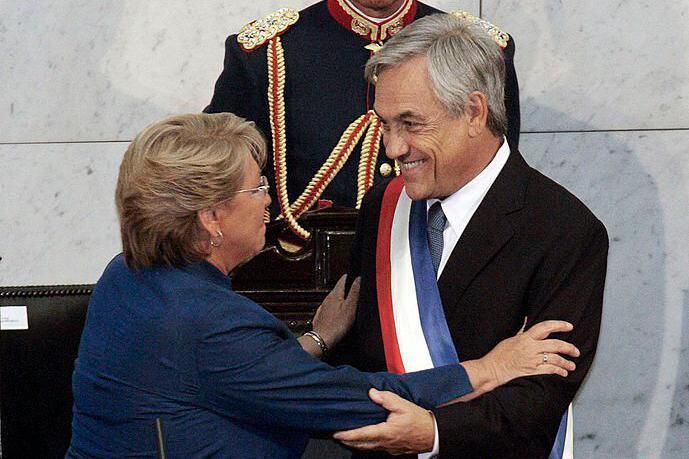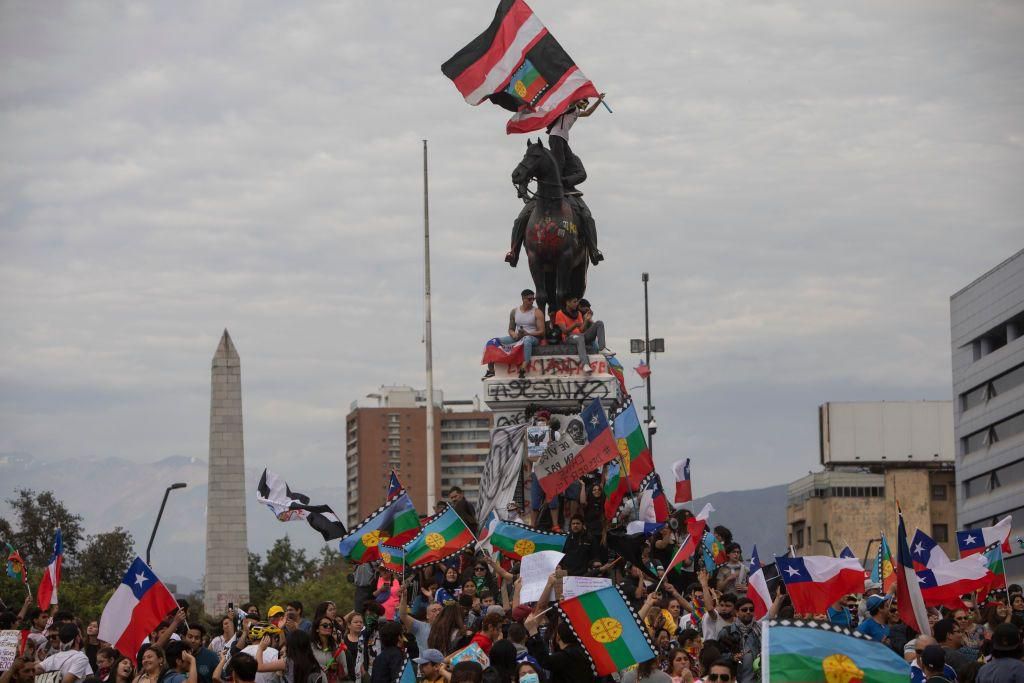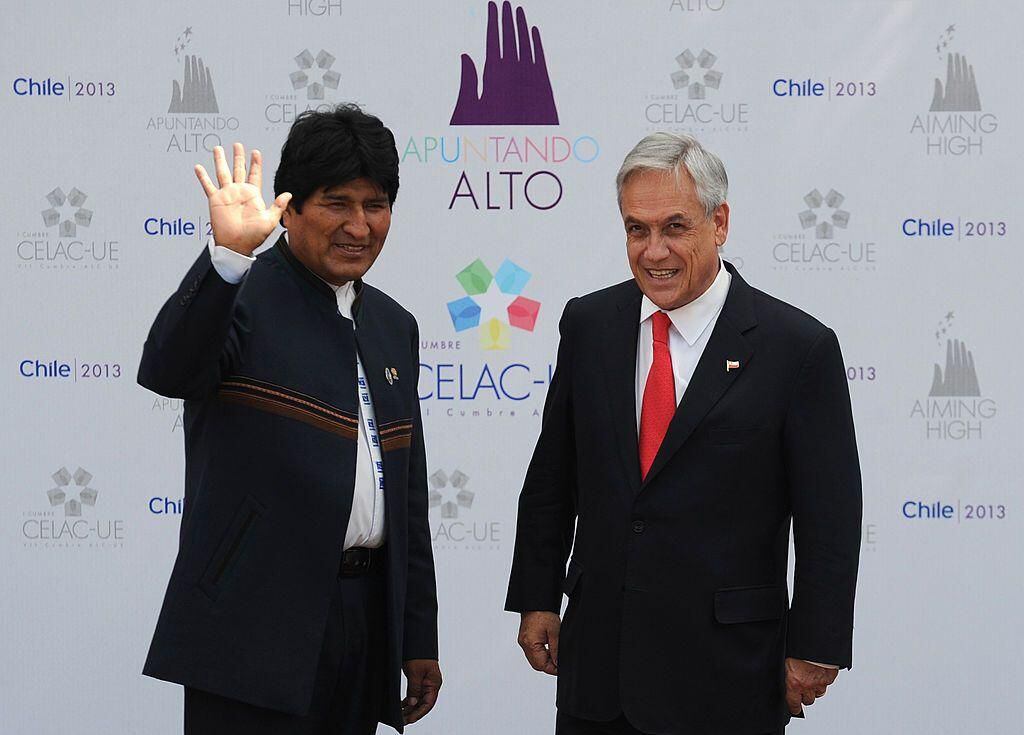Sebastian Piñera He was, without a doubt, a key figure in Chile’s recent history.
The politician and businessman presided over the South American country in two periods: from 2010 to 2014, and from 2018 to 2022.
LOOK: Sebastián Piñera, the millionaire businessman who democratically regained power for the right in Chile 50 years later
He died this Tuesday, aged 74, in a helicopter crash in the center of the country, Chilean authorities confirmed.
In his eight years of government, characterized by continuous ups and downs in popularity and intense social conflictPiñera faced all kinds of challenges.
We review some of the moments that marked his two periods in power.
1. The first center-right president after the return to democracy
Piñera assumed the presidency for the first time in March 2010, succeeding Michelle Bachelet.
His victory in the elections against the Concertación candidate, Eduardo Frei, marked a turning point in Chilean politics.
It marked the end of two decades of government by that center-left coalition that had won every election since the end of General Augusto Pinochet’s military regime (1973-1990) until then.
He was also the first center-right politician to assume the country’s head of state in 52 years.
This milestone meant The beginning of a new era in which leaders of different ideological tendencies alternated in power, in what experts consider a sample of the evolution of the Chilean democratic system towards maturity and plurality.

The beginning of his mandate was marked by Chile’s economic recovery after the impact it still suffered from the 2008 global financial crisis, as well as by the reconstruction in the central area of the country after the devastating earthquake and tsunami of February 2010.
During his first government, Piñera focused on economic recovery, promoting investments and policies aimed at strengthening infrastructure and growth.
Pepper grew on average 5.3% per year, two points more compared to the previous government, although the then president received strong criticism for persistent problems such as high social inequality and the scarcity of public funding in the education sector, which generated strong student protests.
2. The rescue of the 33 miners
A collapse at the San José mine, in the center-north of the country, in August 2010, left 33 miners at 600 meters deep.
The rescue required a long and complex engineering operation that lasted until October of that year.
Aware of the magnitude of the challenge and the international attention that the case generated, the President mobilized all available resourcesboth national and international, to guarantee the rescue of the miners.

The incident was a key moment in the government of Piñera, who took office just five months earlier.
The government became deeply involved in the rescue, a decision experts say was humanitarian and strategic.
The president visited the site of the accident several times, where he promised the miners’ families and the public that the government would do everything possible to save the 33.
The rescue operation, which successfully completed after 69 days of efforts, was broadcast live to millions of viewers around the world.
The handling of the operation and its happy ending gave an important boost to Piñera’s popularity, which consolidated its leadership before Chilean public opinion and also saw his image reinforced on the international stage.
On the other hand, the rescue also sparked a broader debate about safety conditions in Chilean mines and the need for reforms in the mining industry, one of the country’s economic pillars.
After the deficiencies in workplace safety standards and worker protection were criticized, the president announced measures aimed at improving these aspects.
The incident is considered, to date, the largest and most successful miner rescue in the world, as well as the most publicized.
And, for Piñera, it was also the sweetest moment in his often turbulent 8 years in government.
The current Chilean president, Gabriel Boric, referred to this episode during the message he gave this Tuesday on the death of Piñera, whom he ordered to resign with state funeral honors and three days of national mourning.
Boric said that one of the moments in which Piñera “genuinely sought what he believed to be best for the country” was “when he took a risk with great determination and audacity to rescue the 33 miners from the San José mine.”
3. The social explosion of 2019

In October 2019, during Piñera’s second government, Chile was shaken by a wave of protests and demonstrations unprecedented in its recent history.
What began as a student protest turned into a popular cry for a fundamental change in the country’s socioeconomic model.
The one known as “social outbreak”, a period of unrest in which a sector of society – especially young people – took to the streets to demand profound structural changes, was the president’s biggest challenge in his two phases.
The demonstrations for the increase in Santiago metro fares evolved into a broader movement that questioned inequality, the high cost of living, the privatization of essential services, the pension system and the Constitution in force since the dictatorship.
The Piñera government responded with the declaration of a state of emergency, curfew and law enforcement, triggering long and violent clashes that left 34 people dead and thousands of injured and prisoners.
Piñera was widely criticized in Chile for his initial response to the protests, which included this statement rejected by political leaders and members of civil society: “We are at war against a powerful, implacable enemy who respects nothing and no one”.

In an attempt to quell the protests, Piñera announced a series of reforms that included increasing the minimum wage and pensions, stabilizing electricity tariffs and changes to the health and education systems.
Many, however, considered these measures insufficient and too late, and The president’s popularity was at an all-time low.
International organizations such as Human Rights Watch and the Inter-American Commission on Human Rights denounced the excessive use of force by security forces under his government, demanding that he guarantee respect for human rights.
Politically, the “social outbreak” triggered a constituent process that would culminate in a plebiscite in October 2020, where an overwhelming majority of Chileans voted in favor of drafting a new Constitution, an issue that today remains unfinished.
In any case, Sebastián Piñera’s legacy was deeply marked by this wave of protests that began in 2019 and His figure was inevitably associated with a period of deep social and political division. in Chile.
4. Agreements and disputes in the region
At the Latin American level, Piñera’s mandates were also marked by agreements and disputes with countries in the region.
During his first presidency, he signed in 2012 with his counterparts from Colombia, Mexico and Peru the framework agreement that officially gave rise to the Pacific Alliance, at a summit he organized in the Atacama Desert.
This union to promote economic integration between countries and open to Asia was seen as an initiative favorable to free markets and free trade in a region where left-wing governments abounded.

Piñera was also the first president pro tempore of the Community of Latin American and Caribbean States (Celac), which was created in 2011 in Venezuela under former president Hugo Chávez as a regional union without the United States or Canada.
This was a sign that, despite the great ideological distances they had, Piñera reached understandings with Chávez.
When the Venezuelan socialist leader died in 2013, Piñera defined him as “a man deeply committed to the integration of Latin America.”
But Piñera also had disputes with neighboring countries while president.
With Peru, it was an action that this country filed before the International Court of Justice in The Hague in 2008 against Chile, during Michelle Bachelet’s first term, for the delimitation of a maritime border.
The case was resolved in January 2014 with a decision that both Piñera and his then Peruvian counterpart, Ollanta Humala, considered reasonable.
Bolivia also filed a lawsuit against Chile in The Hague during the presidency of Evo Morales in 2013 for an exit to sea, which was ultimately rejected.
Despite the strong differences they both had, Morales expressed his condolences on Tuesday over the death of Piñera, with whom he said he had worked “side by side on several issues.”
Source: Elcomercio
I am Jack Morton and I work in 24 News Recorder. I mostly cover world news and I have also authored 24 news recorder. I find this work highly interesting and it allows me to keep up with current events happening around the world.

:quality(75)/cloudfront-us-east-1.images.arcpublishing.com/elcomercio/GYPGGQ5YWJEGVODYZ6EKWBCCUE.jpg)

:quality(75)/cloudfront-us-east-1.images.arcpublishing.com/elcomercio/SH7TJZEDJBHA5KJZGNVJC7IVXE.jpg)
:quality(75)/cloudfront-us-east-1.images.arcpublishing.com/elcomercio/DIWZTVLACFFLBBFI6UIVNLWKMA.jpg)
:quality(75)/cloudfront-us-east-1.images.arcpublishing.com/elcomercio/QB4EKPAJRNFB7JRBBRPJQNWNE4.jpg)
:quality(75)/cloudfront-us-east-1.images.arcpublishing.com/elcomercio/B3NQD5KCQNASBKCQBPS55KEHSI.jpg)
